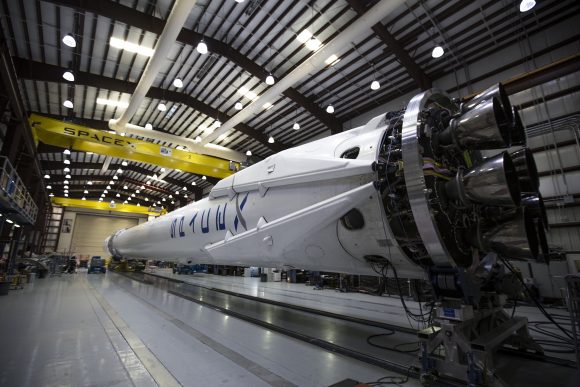The Year in Tech: 7 of the Biggest Technology Trends and Breakthroughs of 2016
There is no doubt that technology is an integral part of our lives. If you just think back to your morning routine, chances are you had several interactions with devices and tech. Our lives are becoming increasingly connected and a new technological reality is just within reach.
While 2016 did bring about some tech product mishaps, it was also a breakthrough year for many of the technologies that will shape our future. This year, we’ve seen extraordinary innovations that have a chance at solving some of the world’s biggest issues and opening up new opportunities.
1. Cars that drive themselves are on their way
While all the major car manufacturers and even some tech giants like Google and Apple are dabbling in autonomous technology, Tesla is seen as one of the industry leaders. There were some issues with Tesla’s Autopilot update, but the fact is that the future of cars is autonomous and the fairly new car companies want to lead the way. Tesla’s system requires certain circumstances to run including clear lanes, constant speed, and an area map. It is also not meant to be completely autonomous, serving as an aid to assist the driver. Elon Musk, CEO of Tesla and SpaceX, has even gone as far as to say that fully autonomous cars could be technically feasible, if not legally so, within the next two years.

Other companies are also making big advances in this space. Ford demonstrated that through the use of powerful lasers and sensors, they could map out an entire urban area even when lane markings were unavailable. Lexus is currently using adaptive cruise control with their LC 500 coupe to help assist in driving during traffic by braking down to zero and resuming on its own. Volvo’s new S90 also has a Pilot Assist feature that allows the car to drive autonomously up to about 30 MPH in traffic if there is a car in front of you.
2. Solar is getting bigger
It seems clear that renewable energy, especially solar, are the wave of the future. Solar panels are becoming increasingly more efficient and cost effective and the big names in tech are taking notice. SolarCity, one of the key players in solar energy, are finishing construction on their factory in Buffalo, New York. The facility which was paid for by the state will produce some of the most cost effective and energy efficient solar panels available in the commercial market, positioning SolarCity’s plant to become the largest solar manufacturing facility in North America.
Elon Musk also unveiled the Tesla Solar roof which he proclaimed would actually cost less to manufacture and install than a traditional roof. Made of textured glass, the solar shingles are indistinguishable from high-end roof shingles and convert light into energy for your home.
3. Reusable rockets are powering up
Rockets are typically destroyed after embarking on their maiden voyages, but companies like SpaceX and Blue Origin are working to end that and usher in a new era in spaceflight. Both companies have managed to launch rockets that cost tens of millions of dollars into space and bring them back down to earth, or rather to their landing pads, on fold-out legs without damage.

While Blue Origin hopes to take tourists onto four-minute space capsule rides, SpaceX wants to use their rockets to launch satellites and supply the International Space Station. Regardless of their intentions, the fact is that these companies are lowering the cost of spaceflight and creating new opportunities for the future.
4. DNA & the wild world of genetic engineering
It’s been a big year for biomedicine, and DNA is at the heart of many advances this year. In 2016, we saw a breakthrough in the fight against cancer when a 1-year-old with leukemia was pronounced “cured” after receiving an experimental therapy consisting of “killer T cells programmed to wipe out cancer.” This kind of breakthrough in immune engineering could mean an end to the diseases that plague our society from cancer and multiple sclerosis to HIV.
Companies like Helix and Illumina are also changing the DNA game by creating new business models for DNA sequencing in order to make genetic information available to everyone. Helix and its founder, Justin Kao, are on a quest to create the first “DNA app store.” Helix is doing research to decode more than 20,000 genes and is hoping to sell that information to users.
But DNA isn’t only for finding out more about you. Companies are also using it to store information. In July, Microsoft and the University of Washington were able to encode 200 megabytes of digital files into the building blocks of DNA, breaking the previous record and getting us one step closer to literally being able to store the entire Internet in the palm of our hands.
5. Breaking the speech barriers
This year, Google announced a breakthrough in their translating technology that could help connect the globe. Google’s Neural Machine Translation team has found a way to make their translation systems “nearly indistinguishable” from human translation. Modeled after the way neurons connect in the human brain, deep neural networks are similar to AI technology as it helps identify commands spoken into devices and promises to reinvent machine translation. Google is starting to roll out their new system for translations from Chinese to English. This new system will make web pages easier to read, and could help break down language barriers in the years to come.

Google is not the only one on the translation game. Skype also released an AI based translator that allows you to talk to anyone, anywhere, regardless of language. When the user speaks through the Skype service, the AI analyzes the words and transcribes them into text, like a live action closed caption system. The best part is the Skype’s AI is self-learning. When it listens to regional accents or slang, it becomes smarter and functions better.
6. Reality that is also virtual
As our world becomes more and more connected, all of our digital interactions are becoming synchronized to create ambient digital experiences that blur the boundaries between life and our devices. These experiences blend physical, virtual, and electronic environments that flow with users as they move around their lives. With the advent of Virtual Reality, Google glasses, and the Internet of Things (IoT), it will become increasingly difficult to know when the digital world ends and when the real world begins.
Moreover, companies are making things like VR gaming more accessible to the public and to developers as the platforms and experiences start to become more cost effective and mainstream. Google Daydream Labs allow developers to animate and build virtual reality inside VR itself. They can interact, socialize, offer feedback, and use controllers to create their virtual world around themselves.
This year we saw virtual reality also move from the game floor to the medical floor and beyond. From mental health therapies to military simulation and more, virtual reality is set to become a huge part of our future thanks to the breakthroughs that 2016 has brought us.
7. Universal web access, or at least the start of it
While almost 57% of the world’s population is offline, businesses like Google, Facebook, and even SpaceX have made it their mission to help spread the web as far as it can go. This year, Facebook Aquila, their first “internet drone” was tested. The drone can stay in the air for long periods of time and beam broadband internet access to an area up to 60 miles wide.

Companies like OneWeb and SpaceX are working on satellites that can deliver Wi-Fi signals back down to Earth. The idea is that these satellites would orbit much closer to Earth than traditional satellites and provide access to regions all over the world in an attempt to close the internet gap. Google’s Project Loon involves high-flying balloons that float way above commercial airspace and beam down internet signals to ground stations, homes, and workplaces.
While these are in no way all of the technology breakthroughs that have occurred in 2016, it is easy to see that tech-driven industries were busy trying to change the world. With challenges and barriers being overcome on a daily basis, it is only fitting that we celebrate this year’s successes and look forward to 2017’s advancements.
What technology breakthrough do you find most impressive? Share with us on Facebook!


.png)
